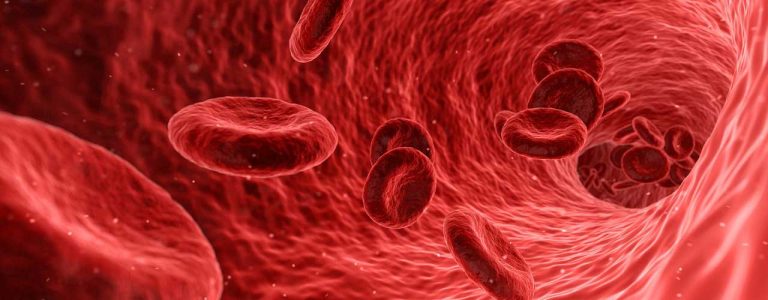Ritalin can be detected in urine for up to 48 hours after the last dose, in blood for up to 24 hours, and in hair for up to 90 days. However, these detection times can vary and are not always accurate. The amount of time that Ritalin stays in the system can vary depending on individual factors such as age, weight, and liver function, as well as the dosage and frequency of use.
If you have drug screening coming up soon, you might be wondering “how long does Ritalin stay in your system?” This is an important question because if you have been taking Ritalin illicitly, taking a drug test may mean that if the Ritalin you have been taking shows up, it will cause you to fail the test.
The ramifications of failing a test are severe. You might lose your job, you may lose custody of your children, and you could face serious legal problems.
Read on to find out how long Ritalin stays in your system. Of course, the best way of passing a test for Ritalin is to stop taking the drug. If you are interested in quitting taking Ritalin, consider getting professional help.
Find help: Orange County Rehabs
What is Ritalin?
Ritalin is a medication that is used to treat attention deficit hyperactivity disorder (ADHD). It is a central nervous system stimulant. It works by increasing levels of neurotransmitters dopamine and norepinephrine in the brain. This helps to improve focus and concentration, and reduce impulsiveness and hyperactivity.
Ritalin is available in both tablet and extended-release forms. The extended-release form of Ritalin is designed to be taken once daily, while the tablet form can be taken two or three times per day.
Ritalin can also be abused. When used recreationally, it can produce feelings of euphoria and increased alertness. It can also lead to dependence and addiction. If you or someone you know are struggling with an addiction to Ritalin, professional help is available. Treatment for Ritalin addiction typically includes a combination of detoxification, behavioral therapy, and medication.
Don’t wait to get help for your Ritalin problem. Treatment can make all the difference in recovering from addiction and living a healthy, happy life.
How Long Does Ritalin Stay in Your Body
The length of time that Ritalin shows up during drug testing depends on the type of test used. How long Ritalin shows up in your system is also affected by a few other factors. These are given below in the section on Ritalin half-life.
Urine Tests
How long does Ritalin stay in the urine? If you have a urine test, Ritalin will show up between one to two days after it was last used. This means that you only need to stop using Ritalin for a couple of days so that you can pass a urine test.
Blood Tests
While you may be likely to get a blood test for other types of drug abuse, you are unlikely to receive a blood test for Ritalin use. If you do, it will only show Ritalin use for around 12 hours after it was last used.
Hair Tests
If you are asked to give a sample of your hair during drug testing, Ritalin will show up in this sample for up to 90 days after the last time you have used the drug.
What Is a Ritalin Half-Life and Why Is It Important?
When measuring how long Ritalin stays in your system, the half-life of the drug is an important factor to consider. The half-life is the amount of time it takes for the concentration of the drug to be reduced by half.
The average half-life of Ritalin can vary depending on individual factors, such as age, weight, and metabolism. Half-life is also affected by how the body breaks down and eliminates the drug.
Dangers of Abusing Ritalin
Ritalin abuse can lead to a number of dangerous and potentially deadly consequences. People who abuse Ritalin often take higher doses than prescribed or take the drug more frequently than recommended. This can lead to serious health issues, including:
• Cardiac arrhythmia
• High blood pressure
• Increased heart rate
• Seizures
• Stroke
• Death
Ritalin abuse can also lead to psychiatric problems, such as:
• Hallucinations
• Delusions
• Aggressive behavior or hostility
• Paranoia
What is Attention Deficit Hyperactivity Disorder?
Attention deficit hyperactivity disorder (ADHD) is a mental health disorder that is characterized by problems with focus, hyperactivity, and impulsiveness. People with ADHD may have difficulty paying attention, sitting still, or controlling impulses.
While ADHD can cause significant problems in a person’s life, it is important to remember that it is a treatable condition. One of the most often used treatments for ADHD is medication.
Ritalin is a medication that is frequently used to treat ADHD. People find that their focus and concentration are improved by prescribed use, while it also helps them to reduce hyperactivity and impulsiveness.
Other Reasons People Take Ritalin
There are several reasons why people decide to take Ritalin and other prescription stimulants, other than for ADHD. Some people use it as a cognitive enhancer, as it can help to improve focus and concentration. Often, these people use it in college or other academic environments where they need to be able to focus for long periods of time.
Other people use it in a work environment where they need to be able to focus and be productive for long hours. This is often the case with people who work in creative fields, as Ritalin can help to improve creativity and productivity.
Some people use it recreationally, as it can produce feelings of euphoria and increased energy levels. However, you should know that taking Ritalin without a prescription is illegal and can lead to severe penalties if caught.
Addiction Treatment for Ritalin
Addiction treatment for Ritalin addiction typically includes a combination of detoxification, behavioral therapy, and medication.
Detoxification
Detoxification is the first step in addiction treatment and helps to rid the body of the drug. During detoxification, patients will either be given a taper program or will have their drug use stopped immediately.
It is important at this point that patients are kept as comfortable as possible. This is one of the reasons why it is recommended to go through detoxification in a treatment center rather than at home.
In a treatment center, the risk of relapse is also significantly reduced. Many people who attempt a home detox find that it is too easy to access their drug of choice, which leads to relapse.
At home, there is also the risk of being around people who trigger usage, and who may cause a relapse. There are also problems caused by being in the same environment as when the patient was using the drug.
Behavioral Therapy
After detoxification, behavioral therapy takes place. Behavioral therapy can help to identify the underlying causes of addiction and teach new, healthier coping skills.
Common elements of behavioral therapy include relapse prevention and the reading of the patient’s life story. In rehab, there tends to be a combination of both one-on-one sessions and group sessions.
Aftercare
After behavioral therapy, there is a period of aftercare. Aftercare typically includes support groups and continued therapy. It is important that you have a solid support system in place after treatment to reduce the risk of relapse.
Getting Help for Ritalin Abuse
If, after reading this article, you think you need professional medical advice for your Ritalin problem, know that help is available.
Licensed medical professionals at Cornerstone are on standby, ready to assist you with your Ritalin problem today. We have guided countless others on the path to recovery from Ritalin abuse. We can do the same for you.






